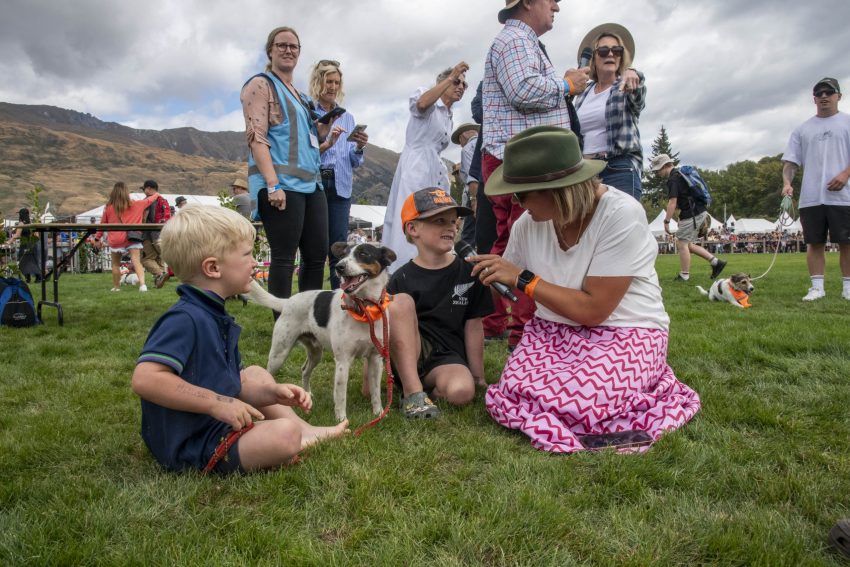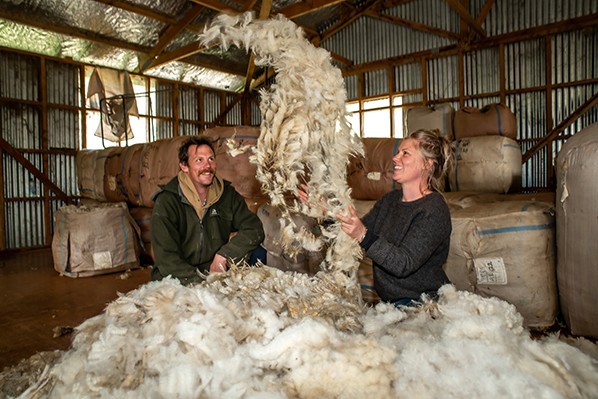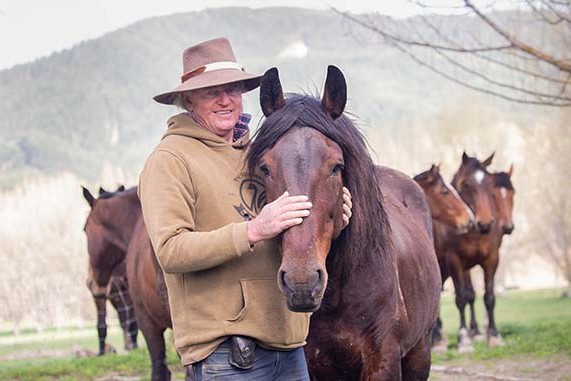Shearing for love, not money
It was supposed to be a non-shearing holiday for Paul Harris when he flew to England recently for his son’s wedding. But as one of only 19 World Sheep Shearing Record Society (WSSRS) referees on the planet, his services were called upon for a world sheep shearing record attempt. By Annabelle Latz.
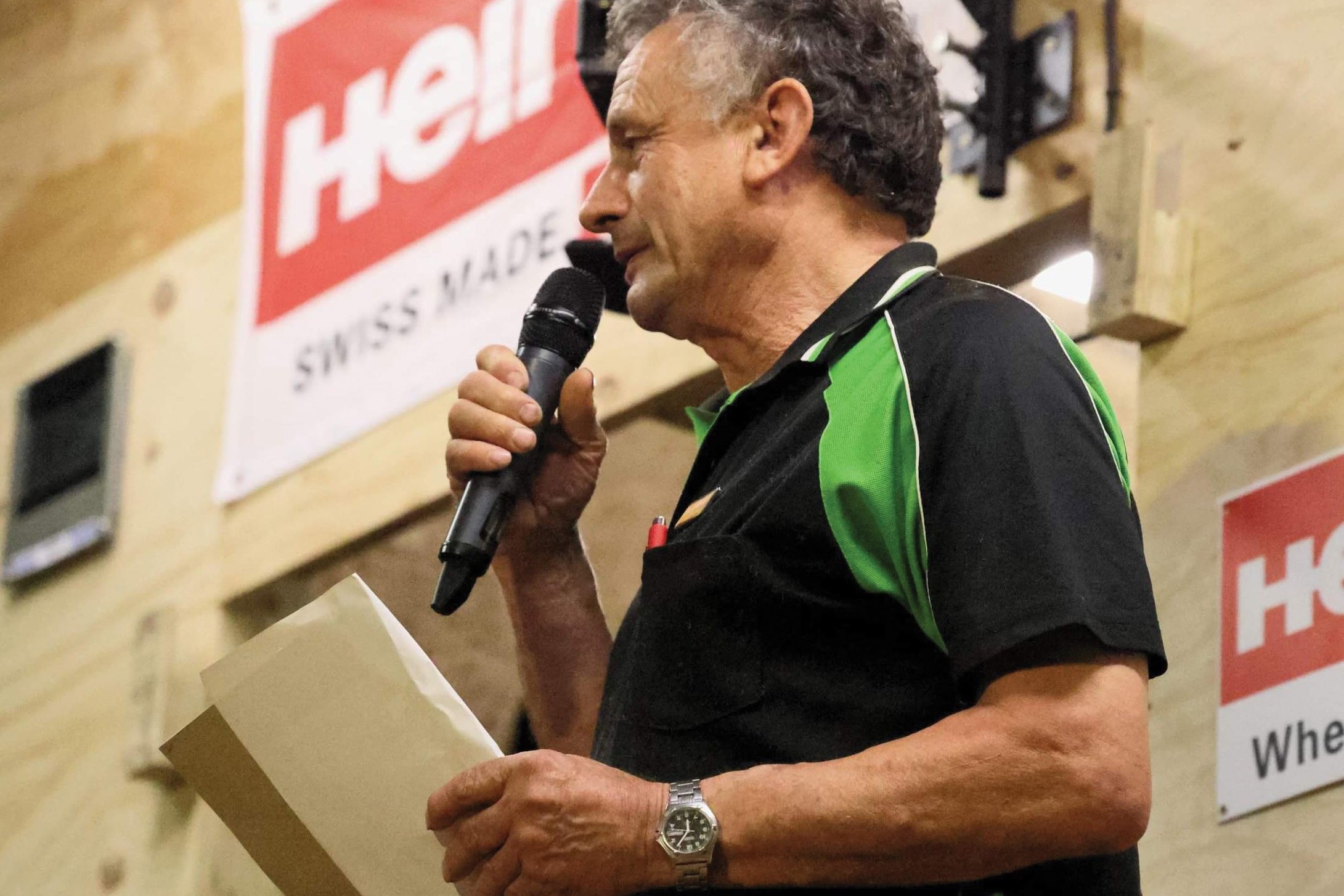
ANY ATTEMPT TO ACHIEVE A WORLD RECORD for sheep shearing has to tick a few boxes. Eight pages of them in fact – as set down in 1983. Having an international judge present is one of them.
There was a cold wind that day, Friday August 4 in the village of Abbey Dore, Herefordshire, the mercury sat in the mid-teens, the rain had stopped.
Attempting the eight-hour world record for strong-wool lambs, the young Englishman Steven Rowberry shore 706. That was a fair few short of the world record of 754, held by New Zealand’s Jack Fagan from King Country who’d set the record on 22 December 2022. Just two days earlier fellow King Country shearer Reuben Alabaster, only 19 years old, had scribed his name in the record books, shearing 746. His glory may have been short-lived, but it’s in the Guinness Book of World Records forever.
“Rowberry had a long way to go, he had to be two seconds quicker per sheep,” Paul says, explaining that the Englishman took an average 40 seconds a lamb but had to be hitting 38 seconds to hit the mark. But he did set a British record.
Paul says there is a lot more to attempting a world record than just turning up on the day.
The lambs can be crutched, but only to the size of a hand’s palm, and a template is used to regulate that.
Twenty lambs are randomly selected and shorn for a wool-weight check.
At least 90% of them must have a top knot, and the wool must weigh 0.9kg for each lamb, averaging 18kg over 20 lambs.
There are four judges involved for a single stand record, who spend up to four hours the day before setting up and checking the shed. The pen must hold 22 sheep, the flow has to be that of a woolshed, which can take some creativity in Britain where they use mobile stands.
World record attempts are for lambs, ewes, wethers, merinos, blade shearing, all including men’s and women’s records, and multi stands.
It is based around a working day. An eight-hour attempt is four two-hour runs; the day starts at 7 or 7.30am, with half an hour set aside for two smoko breaks and an hour for lunch. For the nine-hour attempt, the day begins at 5am; after two hours of shearing there is an hour break for breakfast, then four 1hr 45min runs, with smokos and lunch dotted in between.
“The old nine-hour day was the standard back in the day,” Paul says.
The judges count out every half hour, assessing for quality of shearing. They have the power to subtract any sheep from the tally that are not shorn to an acceptable standard.
“The welfare of the animal is paramount. And this rule also keeps things fair for all competitors.”
Paul says it’s an impressive sight, seeing shearers in action. The body language at the end of their mammoth effort is always the same, whether they’ve achieved a new record or not.
“They are destroyed. Some say it’s like running two marathons. They’re in another world somewhere when they’ve finished.”
Paul, 65, has been judging world record attempts for 17 years in New Zealand, Australia and Britain. He says he’s judged about 35 attempts and about half have been successful. All judges are based in New Zealand, Australia, the UK or South Africa. Along with one other, Paul is the most experienced judge and represents the countries included in the WSSRS.
The WSSRS’ shearing records are the only ones recognised by the Guinness Book of World Records.
“It’s such good fun.”
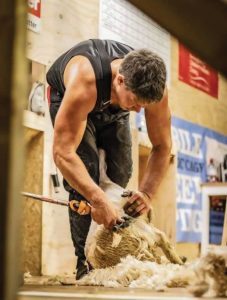
Judging via Zoom and live stream happened three times during Covid, including the current men’s nine-hour strong wool lamb world record holder, Englishman Stewart Connor, in July 2021, shearing 872.
“I tell you, it was interesting.” Staying up all night was tough for Paul, but luckily the Tokyo Olympics were on to provide good background distraction during the breaks.
Things don’t always go to plan though. Just before Covid, Paul flew to England for a world record attempt, but the wool weight on the sheep was not sufficient. Very hot and dry conditions meant the wool had lost its grease, and the best wool weight achieved was 29.68kg over 10 ewes, but the rule was 30kg from 10 ewes.
The attempt didn’t take place. It’s unfortunate moments like this that put the enormity of the event into context.
It costs about US$3000 to attempt a single stand world record, plus meals and accommodation for the judges.
Mental toughness is massive, and competitors spend a lifetime training with the handpiece, as well as putting in extra effort with cardio fitness. Their diet is impeccable.
“It’s not a case of just turning up on the day.”
Prize money is not a draw card. A world record holder gets their name Guinness Book of World Records, plus a certificate.
“The sacrifices they make are quite incredible.”
Co-operation from the farmer is also huge. Once in the King Country 4000 lambs were needed, so a farmer shepherded 15,000 ewes with lambs at foot from throughout the station to central yards. A massive draft took place.
In England they rely on multiple farmers to supply stock.
“We always talk about record shearing speeds, but the sheep have to be good for shearing too.”
Romneys or Romney crosses are commonly used for New Zealand competitors.
Paul first held a handpiece as a 17-year-old and was a full-time shearer for 25 years in Waipara, North Canterbury.
He owned a shearing business too, which he sold seven years ago, during and after being on the handpiece.
With 20 shearers under him, they shore about 750,000 sheep.
“In Waipara we could shear 80% of our sheep within 20 minutes of home.” That would now be about 20%.
Competitive shearing took Paul around New Zealand, once taking home the Open title from North Canterbury’s Amuri A&P Show.
His administration roles as chairman of both the WSSRS and South Island Shearing Sports also keep him busy.
He’s looking forward to judging the South Island competitions on the New Zealand circuit this summer and attending three of the seven world record attempts booked between December and February, dotted around New Zealand.
Five of these seven attempts will be for women’s titles. The number of women in competitive shearing has increased in recent years.
“They’re keen to learn, and they’re very neat and tidy,” Paul says.
Their world record numbers are not too far behind the men.
New Zealander Megan Whitehead, (Gore, Southland) set the current nine-hour world record for strong wool lambs in January 2021, shearing 661.
New Zealander Sacha Bond (Fairlight Station, Northern Southland) set the current eight-hour world record for strong wool lambs in February this year, shearing 601.
“They’re taking it to the next level.”

